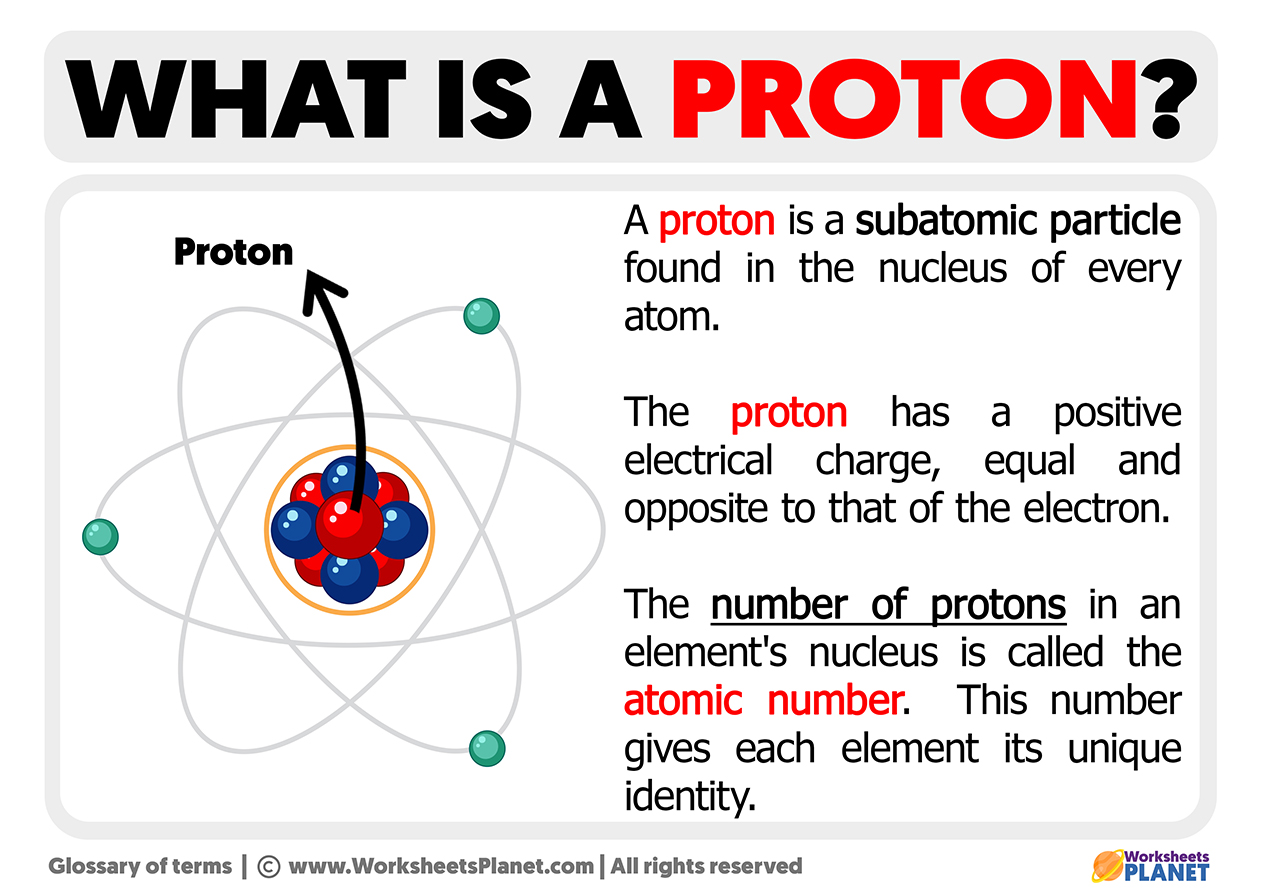The nature of protons occupies a significant place in the pantheon of subatomic particles, often as enigmatic as a riddle enclosed within the fabric of the cosmos. Central to the structure of atomic nuclei, protons are frequently misconstrued solely as minuscule bundles of positive charge. However, their classification as elementary or composite particles invites a deeper exploration into the intricacies of particle physics and our understanding of matter itself.
A cardinal question arises: Is a proton an elementary particle? The answer is not as straightforward as one might assume. Traditionally, an elementary particle is defined as a particle that is not composed of smaller constituents and, as such, is not subject to further division. Protons, however, are not isolated entities; they embody a more complex nature. In the realm of quantum chromodynamics (QCD), protons are acknowledged as composite particles, comprising three valence quarks bound together by the strong force, mediated by gluons.
Quarks, the fundamental building blocks that constitute protons, are themselves elementary particles. These elementary quarks consist of distinct ‘flavors’—up and down being the primary variants found in protons. To better understand their composite nature, one might envision protons as intricate mosaics crafted from quarks, akin to a beautifully woven tapestry. The motley of quarks and the robust interactions between them give rise to the protons we observe, creating a microcosm of activity that reflects the dynamics of the greater universe.
The metaphorical imagery of a particle “tapestry” becomes particularly apt, as it encapsulates the duality of protons—they are not merely solitary entities but rather manifestations of more fundamental constituents engaging in a dance of forces and dynamics. This dynamism is pivotal, as it reflects the strong nuclear force that binds quarks together, creating an unyielding core that is integral to atomic structure.
The very existence of protons is inseparable from the framework of the Standard Model of particle physics, which delineates the particle zoo into categories of fundamental particles and their interactions. Within this schema, while quarks and leptons hold the title of elementary particles, protons emerge as composite entities, birthed from these very building blocks. Herein lies the paradox: how can something so fundamental to the fabric of matter be considered non-elementary?
To illustrate, consider the analogy of a complex machine; the individual gears and components within it might be understood as elementary, yet the machine itself cannot be reduced to a single gear without losing its functionality. Similarly, protons, while formed from elementary quarks, exhibit properties and behaviors inherent to their composite nature. These distinctive characteristics include, but are not limited to, their mass, electric charge, and role within the nucleus of an atom.
Mass plays an intriguing role in this discussion. While protons are significantly more massive than the quarks from which they are constructed, the majority of their mass arises not merely from the quarks themselves but from the energy associated with the strong force that binds them, as illuminated by the famous equation (E=mc^2). This illustrates a philosophical nuance: mass is derived not just from constituent particles but also from the dynamic interplay of forces—a realization that enriches our grasp of reality at the quantum scale.
Furthermore, protons display remarkable stability, a feature that distinguishes them from other composite particles. For instance, while free neutrons decay into protons over time, protons, under normal circumstances, have an indefinite lifespan—an enigma that sparks fascination among physicists and cosmologists alike. This stability renders protons not only as the building blocks of atomic nuclei but also as crucial players in the synthesis of matter in the universe. Their omnipresence allows them to be present in all atoms, forming a unifying thread that connects all matter in the observable universe.
Moreover, protons participate in a myriad of interactions beyond their role as structural components of atoms. They are vital in the context of nuclear reactions, particularly in stellar processes like fusion, which powers stars and, consequently, the universe as a whole. The nuclei of light elements are coalesced into heavier elements through proton collisions at immense temperatures and pressures, a process as transformative as it is fundamental to the cosmic order.
Yet, while protons serve as composite particles, their identity transcends mere classification. They exemplify a profound interconnectedness, an Aurora of a myriad of phenomena in particle physics and cosmology. As we contemplate the intricate orchestration of protons, quarks, and forces at play, we are nudged to redefine our perceptions of simplicity within complexity.
In conclusion, while protons are fundamentally composite particles, their roles, stability, and implications in the universe reveal layers of complexity that invite contemplation. To label them merely as elementary or non-elementary diminishes the greater narrative of which they are an integral part. Thus, the exploration of protons transcends the boundaries of physics, urging us to ponder not only the nature of matter but also the essence of our cosmic existence.












